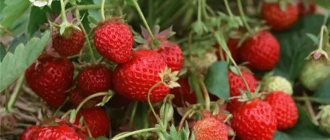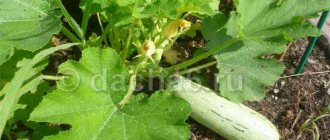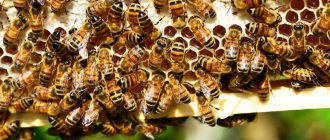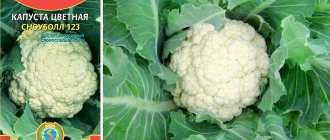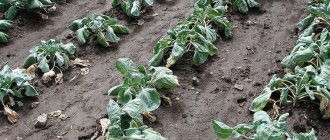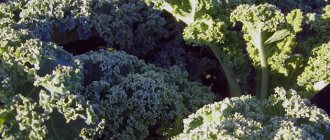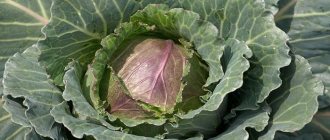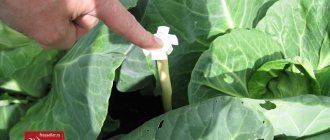Many gardeners like to plant various varieties of cabbage on their plots. This is a relatively unpretentious garden crop that does not require constant care.
Currently, not only the usual white cabbage beauty is planted in their beds, but also exotic kohlrabi, broccoli, cauliflower and Peking kohlrabi. Since breeders from all over the world are constantly working on growing new species that can grow in cold regions, this has become quite possible.
Therefore, white cabbage varieties are planted to be eaten throughout the entire period until the next harvest and for pickling. And the more exotic ones are planted to enjoy various delicacies.
The varieties of this crop differ in terms of ripening, regions of growth, and also in their taste characteristics. This is what our article today will be about.
Description of varieties and types of cabbage
Cabbage is a vegetable crop that does not require particularly complex cultivation techniques. And as already noted, it tolerates negative environmental factors quite easily. At the same time, it produces quite rich harvests. Taking into account the ripening time, the following groups are distinguished:
- Early ripening – from 70 to 115 days
- Mid-season - from 115 to 150 days
- Late ripening – over 150 days
Varieties include cabbage, leaf, cauliflower, savoy, kohlrabi and Brussels sprouts. In general, there are about 90 different species.
This crop is biennial. In the first year, the formation and growth of leaves and heads of cabbage occurs. And in order to get seeds, the crop must grow in the second year.
Cauliflower is an exception in this case.
It should be noted that ordinary varieties can be grown to obtain seeds. And there are hybrids that are marked along with the name - the F1 mark. They are not suitable for collecting and storing seed material, and each time they need to be purchased anew.
The advantage of hybrids is large yields, which ripen earlier than usual and are better stored. However, their leaves may not be as soft and juicy, and many believe that hybrids are inferior in taste to non-hybrids. But they are less susceptible to adverse weather conditions and pests.
Let's look at which varieties and hybrids are the best in a particular classification and variety.
Variety of varieties
Cabbage is a popular crop among gardeners. The vegetable is universal and has high taste qualities both fresh and after heat treatment.
Breeders have developed many of its natural varieties and hybrids, differing in appearance, characteristics and methods of cultivation. This variety makes it possible to choose the most suitable option for yourself.
Types of cabbage
There are several varieties of cabbage, combining four main types:
- Forming heads of cabbage : White cabbage, Red cabbage, Brussels sprouts, Savoy cabbage. The head of cabbage is a well-developed, growing apical bud with a rather complex structure. A rod is formed in the center of it, around which the fruit is formed.
- Leafy : Chinese (Peking), Kale (Curly), Bok Choy, Ornamental, Japanese (Mizuna). The basis of these species is leaves. Unlike cabbage species, there is no rod inside them.
- Formative inflorescences : Cauliflower, Broccoli, Romanesco. The heads of this species are formed from many small flowering shoots that branch as the cabbage grows.
- Kohlrabi is a cabbage with a base in the form of a turnip-shaped or spherical rod.
Classification of varieties
There are several hundred different varieties of cabbage, differing in ripening time, weight, taste, shape and size of heads, susceptibility to diseases and pests, possibility of transportation and storage duration.
Cabbage, carrots, beets are our best food!
Rules for choosing a variety
The choice of cabbage variety is carried out taking into account several criteria:
- view;
- appointment;
- ripening time;
- storage duration;
- degree of resistance to diseases and pests;
- ability to tolerate frost and temperature changes;
- resistance to cracking.
Important! It is best to purchase seeds of different varieties - the variety allows you to choose the most suitable option for yourself.
The best varieties of early and earliest cabbage
Early cabbage is grown using the seedling method. To get an early harvest, many sow it for seedlings at the end of January - February, the deadline is the beginning of March. We have already discussed how to plant it so that it grows strong and healthy in one of our articles.
In this section we will consider the main varieties with a description of the characteristics and some photographs.
White cabbage
- "June". It matures in 90 days; after 60-65 days, you can remove the heads of cabbage, which weigh about 2 kg. Tolerates frost down to 5 degrees. But it is susceptible to cracking. It has a beautiful appearance - in cross section the upper leaves are green, slightly yellowish inside. It has a high content of vitamin B and other beneficial vitamins and microelements.
- "Parel F1" requires about 95 days, and in ideal conditions the harvest can be expected 56 days after planting in open ground. Very similar to “Iyunskaya”, however, the weight of the heads of cabbage is slightly less, only up to 1.5 kg. Rich in vitamin C. It has a short shelf life, but may not lose its appearance and taste for up to two weeks, provided it is in the garden. Developed by Dutch breeders and has an excellent slightly sweet taste.
- “Golden Hectare” grows in no more than 100 days. Seed germination reaches 90%. Weight varies from 2 to 3 kg. Good for salads and dishes that use fresh vegetables. But despite all the advantages, it does not lie well and is sensitive to the soil - it does not like heterogeneous and acidic soil.
Among the early varieties, it is also worth highlighting “Kazachok”, “Ditmarskaya rannyaya”, “Dita”, “Copenhagen Market”, “Transfer”, “Dumas”, “Malachite”, “Zarya”, as well as “Rinda”, “Tobia”, “ Zantoriya", "Express", "Taurus".
Broccoli
- "Batavia F1" is an early hybrid. After planting 30-day-old seedlings, they have time to ripen in 60-68 days. The heads are quite large and weigh over 1 kg, and are well divided into inflorescences. It does not crack and easily tolerates growing in particularly poor conditions. It can also be planted without seedlings; for this, it is planted in the southern regions directly into the ground in the third decade of April.
- “Vitaminnaya” grows in 72-90 days. The fruits are not large - up to 300 g maximum. If you don’t get the harvest right, they become soft and crumbly.
- For Curly Head, it takes about 90 days from the time the seeds germinate until the harvest ripens. The head is medium, weighing up to 500 grams. Used for long-term storage, unpretentious.
It is also worth noting cabbage such as “Yunga F1”, “Linda”, “Green Magic F1”, “Vyarus”, “Iperator”, “Fiesta”, “Sebastian”, “Russian size”, “Romanesco”. The last three varieties have a head weight of over 1.5 kg.
Colored
- “Express MS” is a productive variety that produces fruits in 100-104 days. Heads weighing up to 480 g. When planted densely, it is not inferior in taste and yield to its closest competitors. But it is susceptible to pest damage and has low cold resistance. Can be transported, but storage conditions are not long-term.
- “Snow Globe” matures after planting 40-day-old seedlings in 60-65 days. The fruit itself weighs up to 1.2 kg. Similar to Express, but has strong immunity to pests and diseases. It also tolerates bad weather conditions well. From 1 sq. m. you can harvest up to 2 kg of crop.
- “Dachnitsa” has a longer ripening period – 80-100 days. Head up to 1 kg, containing a lot of vitamin C and glucose. Loves a loose fit and has the greatest shelf life. A special feature is that during the entire ripening period the leaves carefully cover the head, which allows you to obtain pure snow-white fruits.
Varieties of early cauliflower also include “Movir”, “Francoise”, “Yarik”, “Moscow Ultra”, “Garantiya”, Polar Star”, “Tsendis”. They all have approximately the same growing season and have good yields.
Savoy
- “Golden Early” usually requires 105-110 days from germination to obtain a good harvest. A head of cabbage weighing up to 800 g is resistant to cracking. Tolerates mild cold and drought well. Used fresh and boiled, and also as a filling for pies.
- "Nyusha" has gray-green leaves that make up a medium-density, pointed head, weighing up to 1 - 2 kg. Allows you to have a harvest of up to 3.3 kg per square meter. The variety is early, the growing season of which is only 55 - 60 days. Plant seedlings in the first ten days of March, plant in open ground in the first ten days of May. Harvest at the end of June or July.
You can also consider such early representatives of the Savoyard lace beauty - “Early Viennese”, “Komparsa”, “Jubilee”, “Mira”, “Moscow Lacemaker”, “Petrovna”.
Beijing
- “Richie F1” is a hybrid that ripens after seedlings are planted in the ground in about 40 days. Therefore, it is often sown immediately in open ground. Due to the special tenderness of lettuce leaves, it cannot be stored for long. The weight of heads of cabbage often reaches 2.5 kg.
- “Vesnyanka” after planting seedlings in the ground requires no more than 35 days to ripen. Not inclined to shoot. Contains a large amount of vitamin C, so it is great for salads. Not recommended for long-term storage.
Early representatives of the species also include “Cha cha”, “Yukki F1”, Manoko F1”, “Beijing broadleaf”.
Broccoli
Broccoli has beneficial anti-cancer properties. You just need to grow it in your garden. One plant can bear fruit throughout the summer. Instead of cut heads, new ones grow. It is important to know when to plant broccoli in the Urals. She has a peculiarity: she doesn’t like heat.
Advice! You can sow broccoli from May to July with an interval of 2 weeks. In this case, the harvest of useful heads of cabbage can be harvested all summer.
It is easier to grow early ripening varieties of broccoli; sow them for seedlings starting from March 15th. The deadline for planting broccoli for summer consumption is April 15th. For autumn consumption and freezing for the winter, you can sow seeds even at the end of June. Successful early varieties with ripening periods from 45 to 50 days:
- Tone;
- Vyarus;
- Corvette.
Broccoli seedlings are planted in the ground at the age of 35 days.
Mid-season varieties with descriptions of characteristics
White cabbage
- “Moskovskaya late 9 and 15” have dense large heads of cabbage up to 5 kg. “Moskovskaya late 15” requires a neutral soil composition, and “Moskovskaya late 9” requires an acidic soil composition. When growing conditions are met, they produce a very bountiful harvest. Not used for storage, but great for pickling.
- Stone Head requires only 125 days to harvest. Heads of cabbage weighing up to 6 kg (from 1 square meter - up to 11 kg). It is resistant to cracking and tolerates both light frost and dry and hot summers. It is mainly used immediately for salads, but due to its long shelf life (until March) it can be stored for the winter.
It is worth considering such popular types as “Megaton”, “Atria”, “Merchant’s Wife”, “Sugar Loaf”, “Slava”, “Krasnodarskaya”. The best are also “Gift” and “Menza”. They are distinguished by their large head weight and high yield. Thus, “Menza” produces heads of cabbage weighing 9 kg.
Broccoli
- "Calabrese" is one of the frost-resistant representatives of broccoli. Head up to 400 grams.
- "Arcadia F1" ripens on the 110th day. The average weight is estimated at 450 grams. Ripens well even with very frequent planting and low temperatures.
- “Vitaminnaya” matures in 100 days. The head is standard green, weighs approximately 300 grams, and is of medium density.
Early varieties of broccoli also include “Fiesta”, “Lucky”, “Gnome”, “Fortuna”, “Atlantic”, “Genoa”, “Greenbelt”, “Gran Favorite”, “Compacta”, “Caesar”, Monton”
Colored
- “White Beauty” can produce up to 6 kg per 1 square meter. Heads of cabbage can be collected 65 days after planting. Heads up to 1.2 kg. Temperature changes, attacks by pests and diseases can greatly reduce its yield.
- The “white head” takes approximately 110 days to obtain a flattened head weighing up to 1.1 kg. Productivity up to 4.5 kg per 1 square meter. It is resistant to frost and has a high content of vitamin C and beneficial microelements, which is why it is popular in cooking, medicine, and cosmetology.
And you can also pay attention to such representatives as “Koza Dereza”, “Flora Blanca”, “Summer Resident”, “Parisian”, “Purple”.
And also colored beauties, such as the “Purple Ball”.
Savoy
- "Melissa" is a hybrid obtained specifically for autumn harvest. The heads of cabbage, flattened on the sides, are large, weighing up to 3 kg, with high density, resistant to cracking. It has dark green bubbly leaves with a mild pleasant taste. The harvest is harvested 120 days after emergence. The crop is not afraid of slight frosts and tolerates drought well.
- "Thaler" is similar to "Melissa", but with an even flatter head of slightly smaller size - up to 2 kg.
- "Tasmania" is particularly cold-resistant, but is demanding of high nitrogen content in the soil. The head of cabbage is round, weighing up to 1.5 kg.
“Vertu”, “Sfera F1”, “Kroma” have good characteristics and significant yields.
Beijing
- “Granat” has cylindrical heads weighing up to 2 kg. It takes 70-80 days to ripen. Unpretentious, with a stable harvest.
- “Anako” is very similar to “Pomegranate”, but it is stored longer and, at the same time, does not lose in taste and quality. It takes a little more than 70 days to grow. Resistant to fungal diseases, which is important for long-term storage of vegetables.
You can also include “Hydra” and “Glass” in this list.
LiveInternetLiveInternet
—Categories
- dacha (5122)
- Growing tomatoes (671)
- Cucumber: growing (487)
- Gardener's Secrets (451)
- Flowers (433)
- Weed control (389)
- Onion garlic (319)
- Feeding seedlings (310)
- Soil (221)
- Seedlings (205)
- Strawberry (195)
- Potatoes (154)
- Shrubs (143)
- Lyadov's beds (137)
- Cabbage (131)
- Carrots beets (126)
- Peppers growing (112)
- Miscellaneous (107)
- Greenhouse (83)
- Workshop at the dacha (80)
- Video lessons (80)
- Kitchen herbs (79)
- Garden magazine (45)
- Zucchini pumpkin (44)
- Radish (44)
- Summer resident calendar (31)
- Lunch at the dacha (6)
- Mushrooms (5)
- Winter preparations (5114)
- Tomatoes (893)
- Cabbage for the winter (762)
- Cucumbers for the winter (760)
- Zucchini (397)
- Eggplant (384)
- Adjika (349)
- Cellar (290)
- Salads for the winter (290)
- Ready to eat (230)
- Salo (209)
- Pepper for the winter (203)
- Jam (162)
- Mushrooms (102)
- Beans (50)
- Canned fish (9)
- beauty and health (566)
- Little secrets of good health (258)
- Health body (172)
- At the mirror (87)
- Psychology (39)
- We sew ourselves (426)
- We sew for children (119)
- Dolls (73)
- Curtains (28)
- Patchwork (14)
- House (378)
- Cleaning (254)
- Home interior (46)
- Chatterbox (36)
- Children (15)
- Mirus (198)
- Backgrounds (2)
- Children (118)
- Children (57)
- About life (54)
- Psychologist (44)
- Growing tomatoes (24)
- Knitting (1827)
- For kids (574)
- Crochet - for curvy ladies (222)
- Miscellaneous napkins flowers (204)
- Crochet (196)
- Knitting needles (162)
- Socks (160)
- Vest (71)
- Pattern (69)
- Booties socks (67)
- Bolero (60)
- Crochet - for curvy ladies (20)
- Hats and scarves (17)
- Diets (411)
- Minus 60 (360)
- Characteristics of Chinese nutritionists (44)
- Food (5376)
- Baking (1075)
- Pies (585)
- Meat dishes (494)
- Vegetable dishes (474)
- Holiday salads (346)
- Salads (258)
- Dairy dishes (242)
- Cookies (231)
- Fish dishes (231)
- Cookbooks (195)
- Pancakes (151)
- Potatoes (150)
- First courses (135)
- Chicken dishes (124)
- Main courses (94)
- Pumpkin (74)
- Sandwiches (70)
- Cabbage salads (69)
- Multicooker (68)
- Pizza (67)
- Dumplings (65)
- Cooking Tips (46)
- Egg dish (35)
- One-pot dishes (28)
- Stalik (23)
- Porridge (11)
- Kitchen herbs (11)
- Fruit dishes (5)
- Dishes for the holiday (1)
—Search by diary
—Subscription by e-mail
— Regular readers
—Communities
—Broadcasts
-Statistics
Mid-late and late varieties and hybrids
White cabbage
- “Aggressor F1” is a hybrid, bred by Dutch breeders, valued for its extreme unpretentiousness to soil and weather. The shelf life reaches up to six months. The weight of one head of cabbage is up to 5 kg and does not require additional care. The growing season lasts up to 120 days; in warm climates it can be sown directly into open ground.
- "Amager" produces a ripe head of cabbage, weighing from 2.5 to 4 kg, on the 120-150th day from the moment of germination. It is stored until April and used for transportation, while the appearance and all the taste are completely preserved. There is also high resistance to cracking and good frost tolerance. But it is subject to a number of unfavorable factors.
Among the best representatives of this culture with excellent characteristics, it is also worth noting such as “Valentina”, “Kolobok”, “Moscow Late”, “Mara”, “ Aros F1″, “Crumont F1”, “Geneva F1”. The latter, as the name suggests, are hybrids.
Broccoli
- Atlantic matures in 130 days. It grows up to half a meter in height and produces dense fruits weighing up to 400 grams.
- “Grinia” is a well-known variety that ripens in 130-140 days. It grows up to 60 cm, with medium fruits, up to 300 grams.
- "Monterey F1" is a special hybrid with incredibly large heads, weighing up to 2 kg.
Other late hybrids and varieties “Agassi F1”, “Ironman F1”, “Parthenon F1”, “Belstar”, “Marathon”, “Continental”.
Colored
- “Amerigo F1” is a hybrid with milky white heads, on average up to 2.5 kg. Ripening time is about 2.5 months. At the same time, from one square meter you can get up to 6-8 kg. It is not susceptible to various kinds of diseases, but is demanding of care.
- It’s not for nothing that “Cortes F1” is one of the most productive hybrids - at least 5 kg of cabbage is harvested per square meter. Head up to 3 kg, very juicy. Ripens in 75 days, stores well, but is demanding on soil and fertilizers.
This also includes “Agniya”, “Clara’s Corals”, “Green Snowdrift”.
Savoy
- “Ovasa F1” is a hybrid of Dutch selection that matures in 140 days after planting seedlings in open ground. Resistant to temperature changes and diseases.
- “Uralochka” needs about 95-100 days to obtain a round head of cabbage up to 2.2 kg, resistant to cracking and with storage for up to 3 months.
“Alaska”, “Cosima”, “Stilon F1”, “Virosa F”, “Nadia F1” - they are also worth adding to the list for consideration.
Beijing
- “Monument” is an extremely high-yielding representative of its species. The heads of cabbage are dense and large, weighing up to 4 kg. The harvest period from emergence is 70 days.
- “Autumn Beauty” is a hybrid suitable for growing in the second half of summer. The head is elongated, not too dense, weighing up to 2.5 kg.
- "Nika" is a hybrid that is especially resistant to shooting. Compared to other species, the leaf blades are highly wrinkled. Head weight up to 3 kg.
It can be consumed not only fresh, but also fermented.
The best winter varieties and hybrids of all types of cabbage
The best varieties with large heads of cabbage
- "Snow White" has bluish leaves that form a dense head of up to 3.5-4.5 kg, depending on care. It tastes good and can be used for anything. Ripening period is up to 150 days. The harvest can be harvested up to 7.5 kg from 1 square meter. It is stored for a long time and tolerates transportation well. Head weight up to 4 kg.
- Moscow late has a head weighing 8 - 10 kg.
- Kolobok – up to 5 kg.
- Megaton – 3 – 4 kg.
- Aggressor – 2.5 – 3 kg.
- Mara – 4 – 4.5 kg.
- Amager - up to 3.5 kg.
- Wintering - up to 3.5 kg.
- Langedijker - 3.5 - 4.5 kg.
- Kharkov winter - 3 - 4 kg.
Late cabbage with small and small heads of cabbage
- “Aros F1” is one of the mid-season hybrids related to winter cabbage (130-140 days). Produces dense heads of cabbage up to 1.9 kg with light green leaves, which become saturated after they have been left for a while. In general, it can be stored for up to 9 months. Also, resistant to the most common diseases.
- “Ilona F1” is a popular hybrid, the harvest of which is harvested 4 months after germination.
Does not shoot, does not form cracks, is not susceptible to diseases. The head of cabbage weighs 1.6-2.3 kg.
Which cabbage is best to plant for pickling and pickling?
Mostly for pickling, late-ripening white cabbage varieties are used; Slava, Moskovskaya pozdnyaya, Belorusskaya, Zimovka or Amager are good in such cases.
- “Slava” is one of the most popular representatives for fermentation. It is extremely productive, and the weight of the heads of cabbage easily reaches 5 kg. Its shape is somewhat flattened at the top and bottom. The deadline for using it in preparations comes in early autumn.
- “Belorusskaya” shares its popularity with “Slava”, but remains longer - until April. The harvest can be harvested after 4.5 months; the heads of cabbage have an average weight of 3.5 kg. Cabbage transports well and cracks only in rare cases.
It’s also worth taking a close look at such white-headed beauties as “Podarok” and Kharkovskaya Zimnaya.”
Recently, breeders have developed new varieties and hybrids that are also good for fermenting and salting. These are “Atria F1”, “Miracle F1″ (Dutch selection), “Nadezhda”, “Megaton F1”, and also “Kvashenka”.
When to harvest cabbage in the Urals in 2022
Heads of cabbage are usually cut after the first frost, in late September or early October. Also, to determine the timing of cleaning, the lunar calendar is used. Heads of cabbage are cut during the waxing moon, when all the juices rise into the head of cabbage. Heads of cabbage cut at this time are more juicy. Favorable days in 2022: from September 24 to 29 and October 1, 2, 23, 24, 25, 26, 27, 28, 29, 30.
Cabbage harvesting technology. The heads of cabbage are carefully cut off along with the stalk and lightly dried in the wind. They are cleaned of dirt and lowered into the cellar for storage. Late varieties of cabbage are well stored in winter until the next harvest.
Dutch varieties for planting in central Russia
We have already discussed many hybrids and varieties of all varieties of cabbage in today’s article. However, here we will write briefly about those that were left without attention.
- "Bingo" is most valued for its very good storage - up to 9 months. It has a small round head (up to 1.5 kg) and does not crack.
- "Langedijker" produces an extremely good harvest, is suitable for harvesting and fresh consumption, and can withstand a long shelf life.
- "Bartolo F1" is a very common Dutch hydride, with an elongated head weighing 3 kg. The leaves are densely spaced and do not wither all winter.
- “Musketeer” is an early variety; after germination, the harvest can be harvested within 55 days. Head weight up to 1.3 kg.
- “Python” is a mid-early plant that requires timely harvesting.
- “Resistor” - the ripening period from planting seedlings in open ground is only 55 days. Heads of cabbage up to 1.2 kg, well stored. During growth, they adapt well to weather conditions and are resistant to diseases.
Recommendations for growing cabbage
To get a good harvest of cabbage, it is important to follow several tips for cultivating it:
- when choosing a variety, take into account the climatic features of a particular area;
- when watering seedlings, use only warm water;
- before planting, dive and harden the seedlings;
- choose the right place for planting in open ground;
- prepare planting holes in advance;
- maintain the required soil quality;
- provide cabbage with suitable conditions for growth by observing all agrotechnical rules: watering and fertilizing regimes, loosening, weed control, treatment to create protection from harmful insects and diseases.
Video about which hybrids of Dutch selection are best to choose for planting
From this video you can find out what the best hybrids were bred by Dutch breeders. There are only 8 of them here, and all of them are described in detail. Thanks to the author’s experience, you can make the right choice in favor of one or more of them. In his opinion, these are the best representatives in this category.
Perhaps some of them are already familiar, and some you will hear about for the first time. If you know other good hybrids, write about them in the comments. Let people learn about new varieties.
Knowing the characteristics of a particular hybrid will help you make the right choice and get a good harvest on your plot.
I hope that this information will be useful and that the harvest will please you.
Cabbage varieties for Siberia, the Urals and Altai Territory
What parameters should cabbage varieties have for growing in Siberia and other cold regions? It should easily tolerate frosts down to 7 degrees, and in addition, have a short ripening period. Therefore, white cabbage is ideal for the Altai Territory and Siberia:
- "Hope F1"
- "Polar"
- "Snowstorm"
- "Purple Lace"
The heads of cabbage of these representatives are approximately the same, medium-large in size (up to 4.5 kg), with excellent productivity.
It is also worth citing suitable hybrids:
- "Gribovsky"
- "Zarya"
- and sometimes "Dumas"
Among the mid-season Siberian “beauties” the most popular are:
- "Present"
- "Siberian"
- "Glory"
- "Belarus"
- "Anniversary F1"
Late varieties of cabbage are less suitable for Siberian conditions, but are still sometimes grown:
- "Amager"
- "Dobrovolskaya"
For the Urals:
- "Glory"
- "June"
- "Cossack"
- "Siberian"
And incredibly beautiful Savoy cabbage “Vologda lace”.
The best cabbage varieties for the Moscow region
Now we will determine the necessary characteristics of the cabbage variety so that we can count on a good harvest in the Moscow region. This is adaptability to frequent and large fluctuations in humidity and temperature, not demanding heat and sunlight.
In addition, in the Moscow region the soil is quite acidic, which greatly limits the number of varieties for successful planting. These representatives of white cabbage, best for cultivation in the Moscow region, include:
- "Late Moscow"
- "Dumas"
- "Glory"
- "Aggressor F1"
- "Amager"
- "Present"
Cauliflower: "Baldo" and "Vinson".
Dear friends, as you have probably noticed, there are quite a few varieties of cabbage for planting. And we looked at most of them today. Of course, we were unable to adequately describe them all within the framework of one article. But thanks to that minimal knowledge, now when you go to a planting material store you can ask for what you need.
All additional information on planting dates, growing season and basic characteristics are described on each of the seed bags. Therefore, there is no need to memorize everything written here.
I hope that today's article will be useful to you. All the best to you, and great harvests to everyone!



